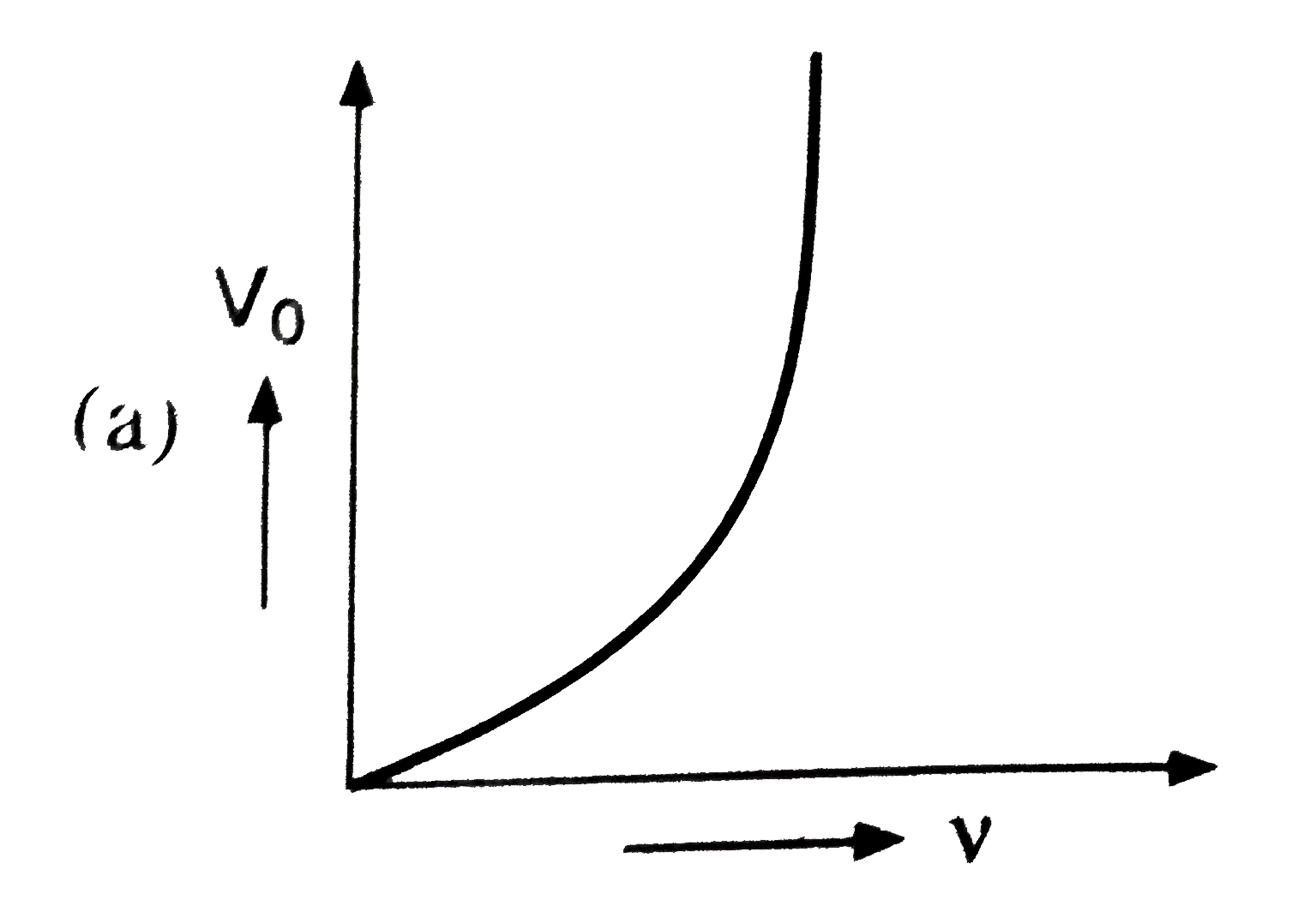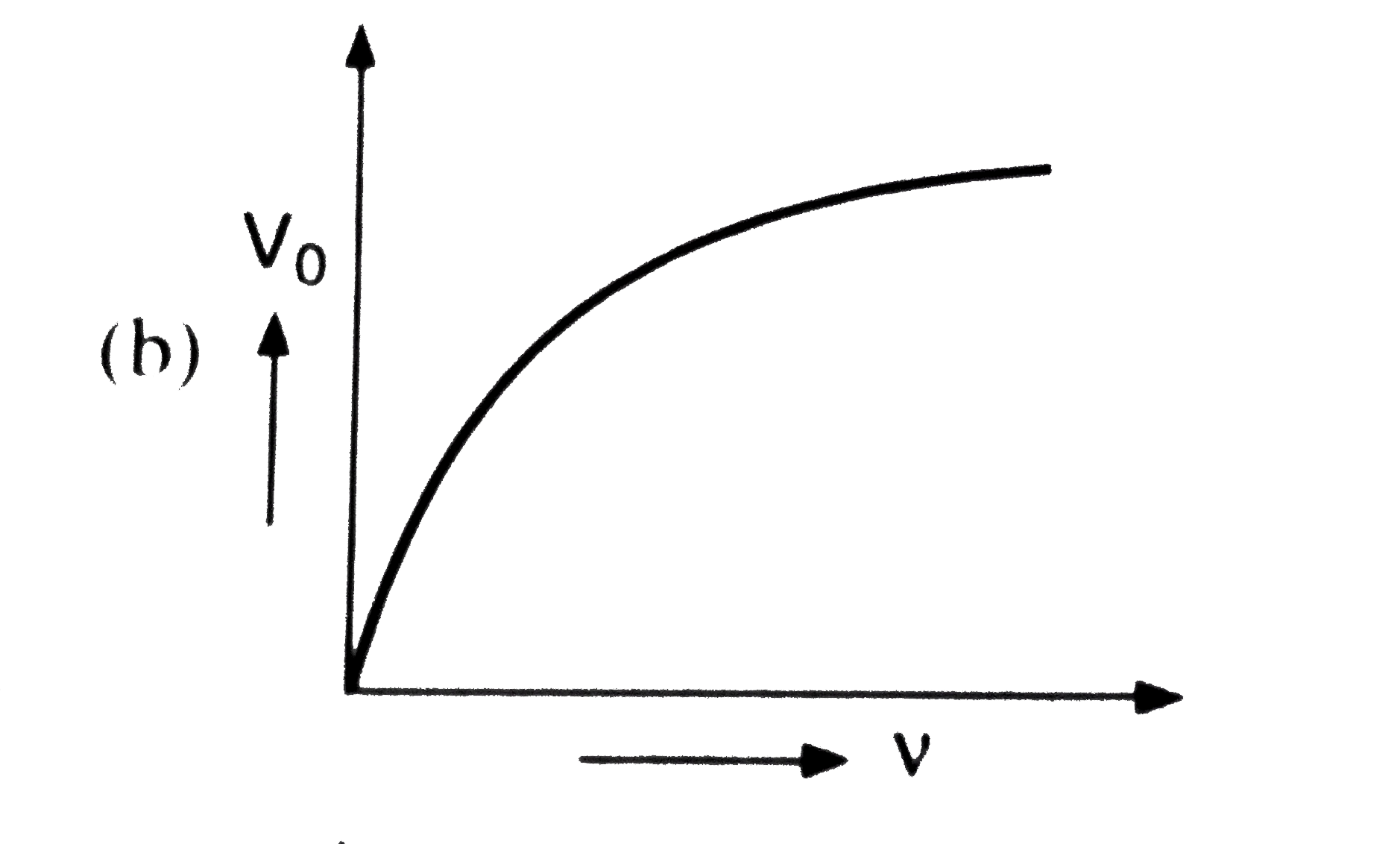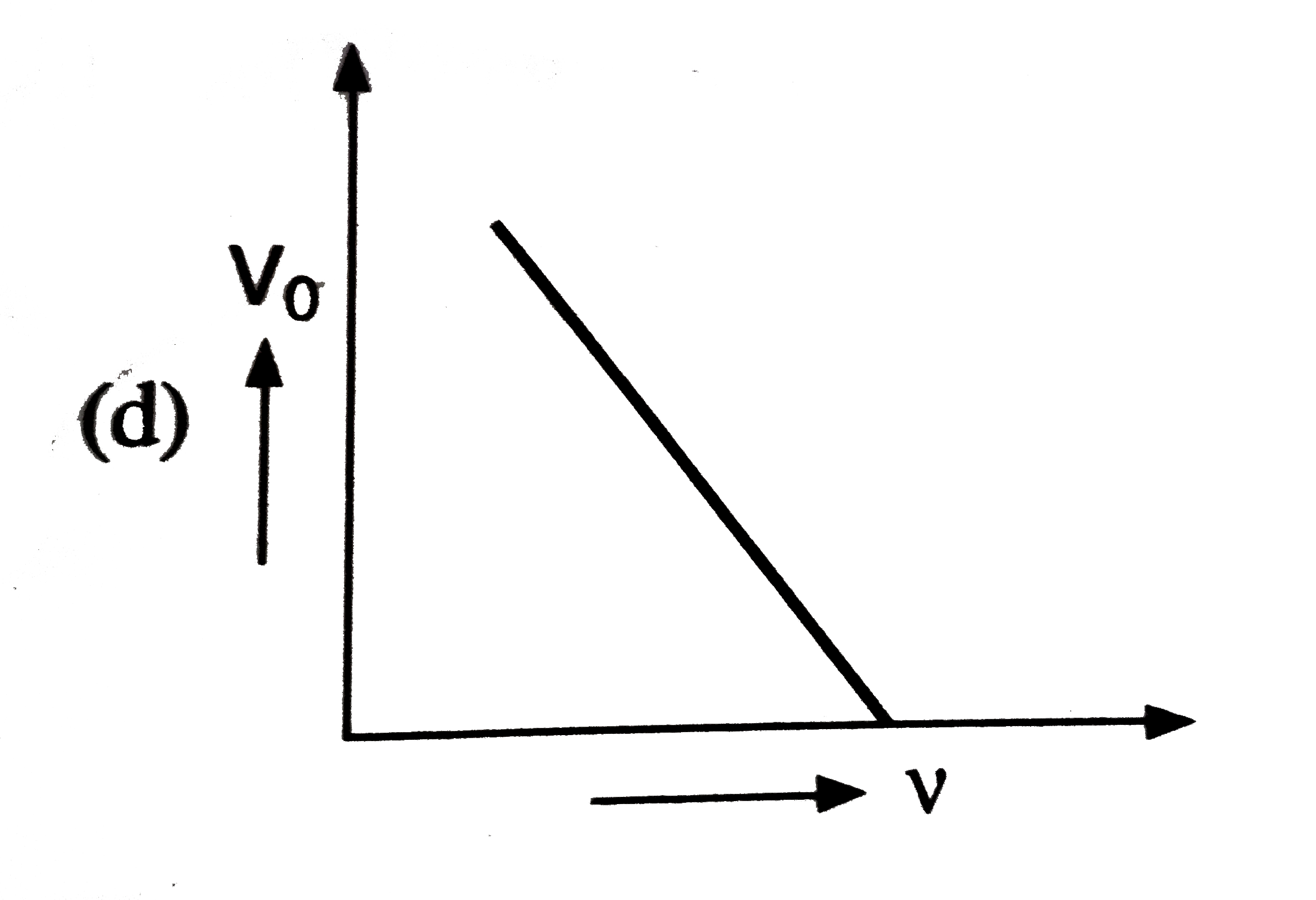Intensity if incident radiation is made half . The stopping potential becomes
Zero
half
three-fourth
unchanged
The correct Answer is:D
Similar Questions
Explain giving reasons for the following :
(a) Photoelectric current in a photocell increases with the increases in intensity of the incident radiation.
(b) The stopping potential (V0) varries linearly with the frequency (v) of the incident radiation for a given photosenstive surface with the stop remaining the same for different surfaces.
(c) Maximum kinetic energy of the photoelectrons is independent of the intensity of incident radiation.View SolutionThe stopping potential for acertain photosensitive metal is Vq when the frequency of incident radiation is V0 When the frequency of the incident radiations is doubled, what will be the stopping potential ?
View Solution
Knowledge Check
- Question 1 - Select One
Which of the following is the graph between the frequency (v) of the incident radiations and the stopping potential ?
A B
B C
C D
D
- Question 2 - Select One
In the previous, if the intensity of light is made 4 I, the stopping potential will become
A1.36VB1.36×2VC1.36×4VD1.36×16V - Question 3 - Select One
In the previous question, if the intensity of light is made 4I0, then the stopping potential will become
A1.36×1VB1.36×2VC1.36×3VD1.36×4V
Explain giving reasons for the following :
(a) Photoelectric current in a photocell increases with the increase in intensity of the incident radiation.
(b) The stopping potential V0 varies linearly with the frequency ν of the incident radiation for a given photosensitive surface with the slope remaining the same for different surfaces.
(c) Maximum kinetic energy of the photoelectrons is independent of the intensity of incident radiation.View SolutionExplain giving reasons for the following:
(a) Photoelectric current in a photocell increases with the increase in the intensity of the incident radiation.
(b) The stopping potential (V0) varies linearly with the frequency (v) of the incident radiation for a given photosensitive surface with the slope remaining the same for different surfaces.
(c) Maximum kinetic energy of the photoelectrons is independent of the intensity of incident radiation.View SolutionWhat, if any, is the effect of the (i) intensity (ii) frequency of incident radiation on the stopping potential in photoelectric emission?
View SolutionWhen radiation of the wavelength λis incident on a metallic surface ,the stopping potential is 4.8 V. If the same surface is illuminated with radiation of double the wavelength ,then the stopping potential becomes 1.6 V.Then the threshold wavelength for the surface is
View SolutionIn the previous question, if the intensity of light is made 4I0, then the stopping potential will become
View Solution

